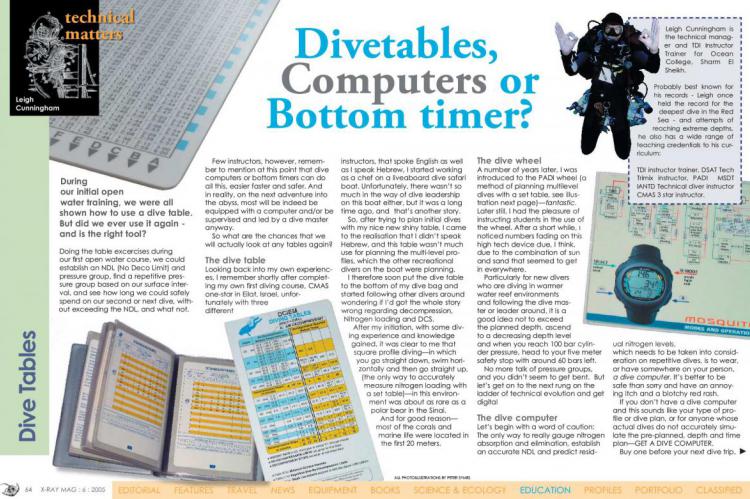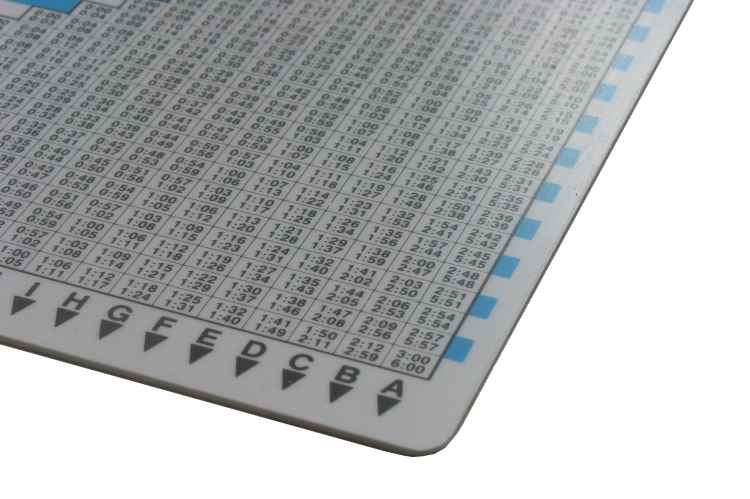Dive Tables or Computers?
During our initial open water training, we were all shown how to use a dive table. But did we ever use it again - and is the right tool?
Tags & Taxonomy
Few instructors, however, remember to mention at this point that dive computers or bottom timers can do all this, easier faster and safer. And in reality, on the next adventure into the abyss, most will be indeed be equipped with a computer and/or be supervised and led by a dive master anyway.
So what are the chances that we will actually look at any tables again?
The dive table
Looking back into my own experiences, I remember shortly after completing my own first diving course, CMAS one-star in Eilat, Israel, unfortunately with three different instructors, that spoke English as well as I speak Hebrew, I started working as a chef on a liveaboard dive safari boat. Unfortunately, there wasn’t so much in the way of dive leadership on this boat either, but it was a long time ago, and that’s another story.
So, after trying to plan initial dives with my nice new shiny table, I came to the realisation that I didn’t speak Hebrew, and this table wasn’t much use for planning the multi-level profiles, which the other recreational divers on the boat were planning.
I therefore soon put the dive table to the bottom of my dive bag and started following other divers around wondering if I’d got the whole story wrong regarding decompression, Nitrogen loading and DCS.
After my initiation, with some diving experience and knowledge gained, it was clear to me that square profile diving—in which you go straight down, swim horizontally and then go straight up, (the only way to accurately measure nitrogen loading with a set table)—in this environment was about as rare as a polar bear in the Sinai.
And for good reason—most of the corals and marine life were located in the first 20 meters.
The dive wheel
A number of years later, I was introduced to the PADI wheel (a method of planning multilevel dives with a set table, see illustration next page)—fantastic. Later still, I had the pleasure of instructing students in the use of the wheel. After a short while, I noticed numbers fading on this high tech device due, I think, due to the combination of sun and sand that seemed to get in everywhere.
Particularly for new divers who are diving in warmer water reef environments and following the dive master or leader around, it is a good idea not to exceed the planned depth, ascend to a decreasing depth level and when you reach 100 bar cylinder pressure, head to your five meter safety stop with around 60 bars left.
No more talk of pressure groups, and you didn’t seem to get bent. But let’s get on to the next rung on the ladder of technical evolution and get digital
The dive computer
Let’s begin with a word of caution: The only way to really gauge nitrogen absorption and elimination, establish an accurate NDL and predict residual nitrogen levels, which needs to be taken into consideration on repetitive dives, is to wear, or have somewhere on your person, a dive computer. It’s better to be safe than sorry and have an annoying itch and a blotchy red rash.
If you don’t have a dive computer and this sounds like your type of profile or dive plan, or for anyone whose actual dives do not accurately simulate the pre-planned, depth and time plan—get a dive computer.
Buy one before your next dive trip. ...
Download the full article ⬇︎

Originally published
X-Ray Mag #6
New Foundland, Canada. Raja Ampat, Indonesia. Marine Insects - walking on water. Glowing Jellyfish. Diving rebreathers, what is it like? Ireland's Connemara. A visit to Cressi-Sub. Technical Matters: Tables vs Computers. Profile: Sylvia Earle. Yolanda Wreck - where did she go? Portfolio: Alex Mustard






























